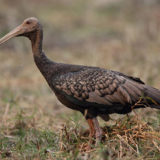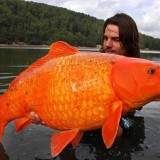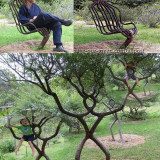Great Crested Newt
Great Crested Newt
Common name: Great crested newt, Northern Crested Newt, Warty Newt
Scientific name: Triturus cristatus
Distribution:
The great crested newt is found across Great Britain, from Western Europe to Northern Alps and Black Sea.
Description:
The great crested newt or warly newt is the largest species of newts. The male and the female almost look alike. The male has a brown body with black spots. For this, it looks all black in water. The underpart of the body is orange or yellow with black marking, every marking is individual. The male can be easily identified for a long comb-like crest in the breeding season that is used during courtship. The female has no crest with an orange stripe along the bottom of the tail and a thin orange line along the centre of the back.
Habit and Habitat:
Great crested newt mainly lives on land but breeds in water sources like ponds, swamps. The eggs hatch after three weeks and the hatched larvae live in the pond as aquatic predators, feeding on tadpoles, worms, insects and insect larvae. Adults hunt in ponds for other newts, tadpoles, young froglets, worms, insect larvae and water snails. They also hunt on land for insects, worms and other invertebrates. During the period of October-March, they hibernate under stones or mud.
Importance:
The great crested newt plays an important role in maintaining an ecological balance in swamp ecosystems. Considering its importance, laws have been made to protect this rapidly declining species.











